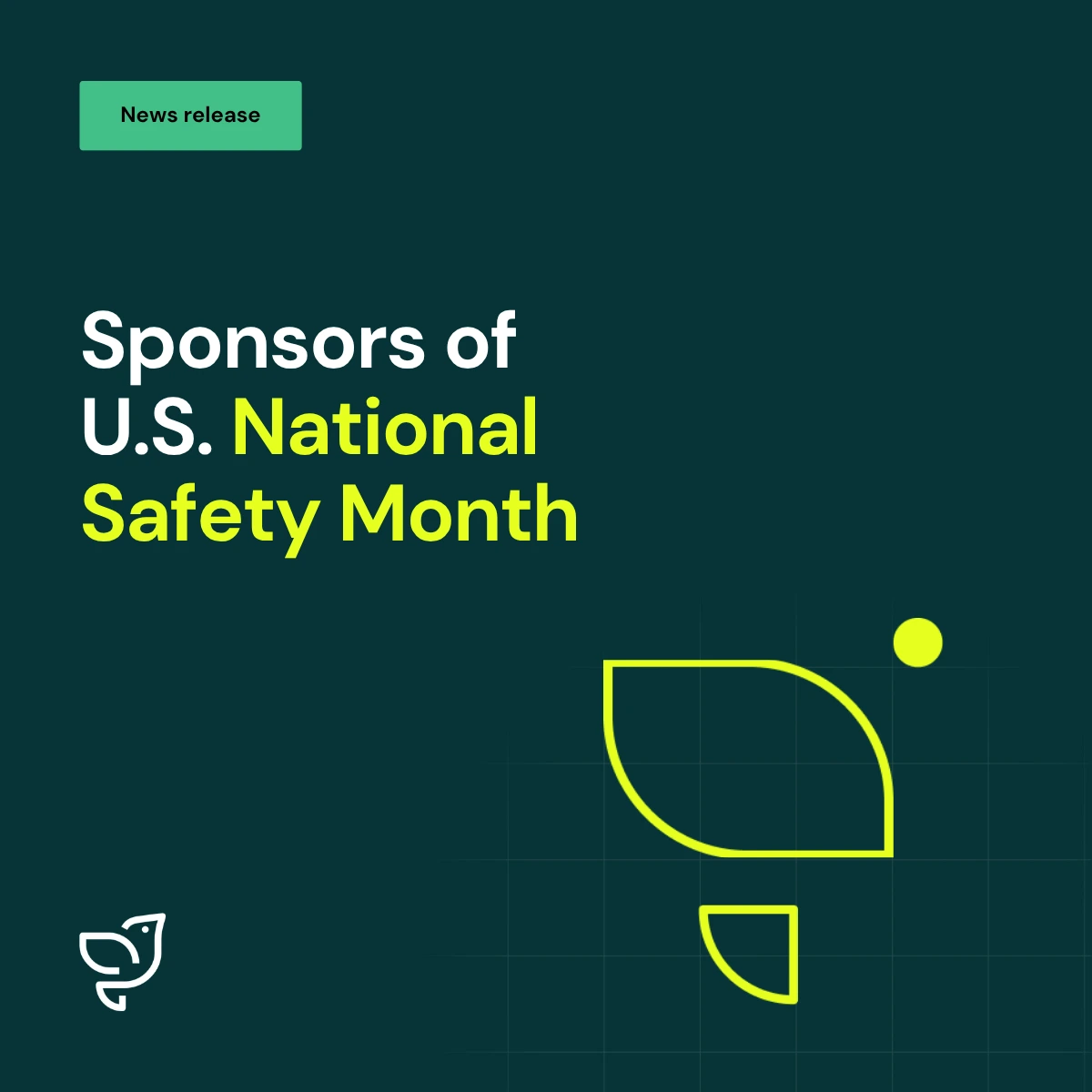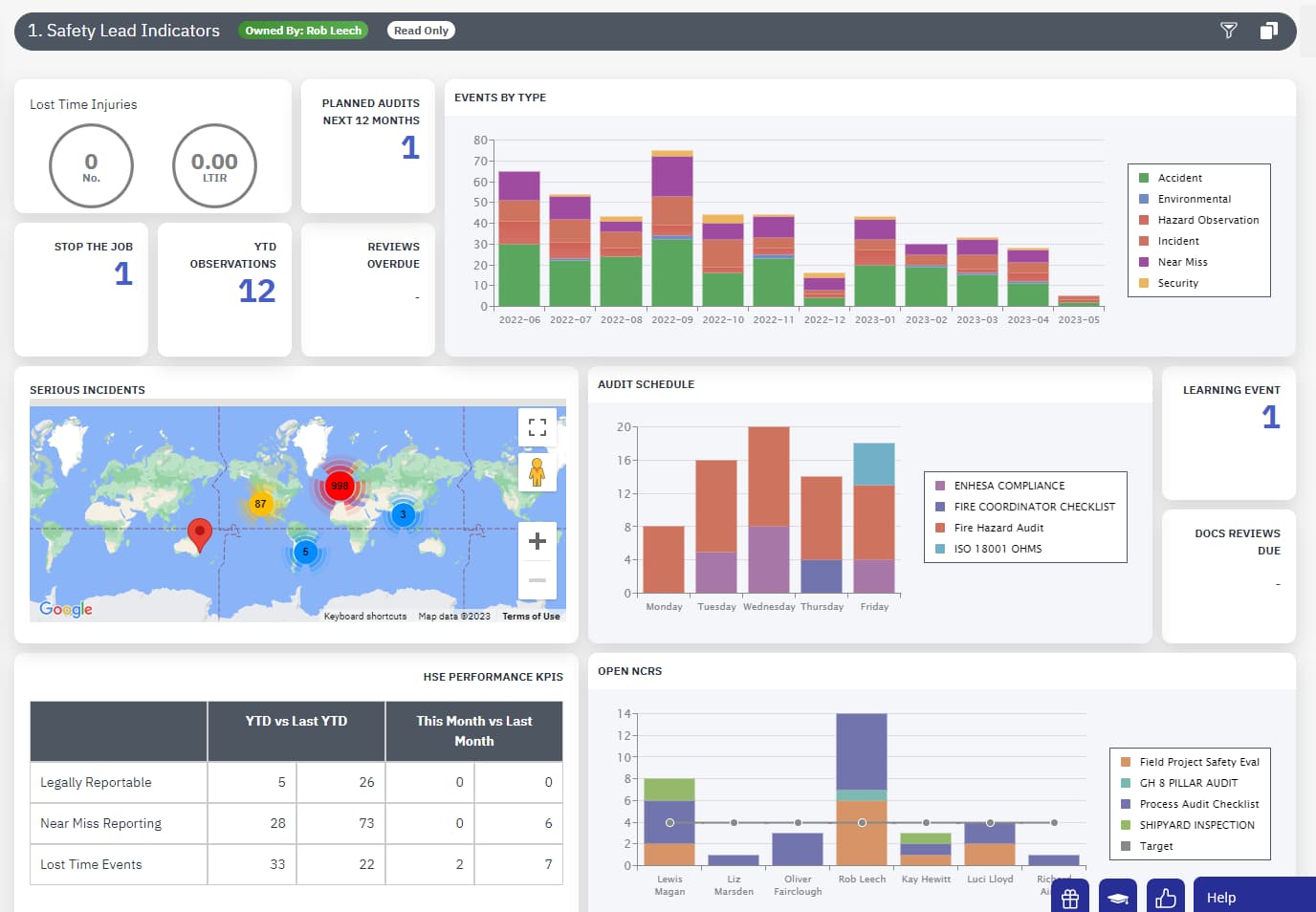Incident Management Process: Step-By-Step

The Incident Management Process
A fundamental part of every employer’s job is providing the workforce with a safe environment in which to complete their tasks. That’s why incident management is crucial in the
process of mitigating hazards and risks on-site to protect your people. Moreover, it can also help you stay ahead of any possible incidents which may occur, keeping you proactive rather than
reactive.
In this blog we will dive into incident management from every angle, including:
- What is incident management?
- The importance of an incident management process
- Incident management process: step by step
- Tips to improve your incident management process
- How is EcoOnline different from others?
Save Lives.
Reduce Costs.
Don’t forget to enter in your text.
BOOK A FREE DEMO →
What is incident management?
Incident management is the process of identifying, controlling, recording, analyzing, and regularly reviewing
all hazards and risks which may cause or have caused an incident at the workplace. This is essential, as it can help you
reduce the number of injuries and illnesses on-site to get your teams home safely at the end of the day.
Importance of an Incident Management Process
Having an incident management process in place at your organization has myriad benefits. First and foremost, it can help to protect your people from hazards and reduce the number
of incidents on-site by allowing you to effectively mitigate risks. With this process in place, which is continuously assessed and evaluated, your organization can work towards preventing
incidents before they occur. Fewer incidents, means less downtime due to company shutdowns or worker injuries and a greater sense of productivity. Ultimately this can help you save money and any
costs related to insurance premiums, with fewer incidents occurring on-site.
An effective incident management process can also help you maintain a strong safety record. With less incidents and injuries, you can elevate your credibility in the market. This
can give you a competitive advantage when it comes to bids/tenders, as organizations are attracted to companies which value safety. This in turn will also attract more employees to work for your
organization, giving you greater retention rates due to your strong reputation and safety record.
Incident Management Process: Step-by-Step
Now that you know the importance of an effective incident management process, our team at EcoOnline wants to help you by providing the following step-by-step
guide to incident management:
Step 1: Alert key stakeholders of the incident
Once an incident occurs, the first step is to alert all key stakeholders. This could be supervisors or managers on duty at the time. Though this is the first step to creating a
safer work environment, some employees may feel the need to hide the incident or not report it at all. This is for fear that they may lose their job or get someone in trouble. It is vital that
you explain to the workforce that reporting incidents is a critical part of everyone going home safely at the end of the day. Safety is a team effort where everyone, from the
front office to front-line workers, is accountable.
The employee who reports the incident should include the incident type and multiple details associated with it, including:
- The date
- When and where it occurred
- Who was involved
- Injuries which may have been sustained by the affected employee/employees
- Witnesses who may have been there
- And more
Step 2: Get to the root cause
Once all details have been documented and recorded and the key stakeholders are notified, it is their responsibility to dive deeper and get to the root cause of the incident.
This involves understanding and analyzing the events which led up to the incident and determining why it occurred.
Speaking to witnesses, assessing the area, and speaking to those who were involved in the incident are important elements in this step to gain a deeper understanding of why the
incident took place. Conducting a root cause analysis is also critical to get to the source, so you know the type of action which must be taken to properly rectify the issue.
Step 3: Put necessary controls in place
Once the root cause of the issue is identified, you must then put the right controls in place in order to correct it. Corrective and preventative actions can be taken to mitigate
the issue or prevent it from happening again. It is important to look at the hierarchy of controls at this point to assess what would be most effective.
The hierarchy of controls showcases different methods to help eliminate or reduce workplace hazards. These include, from most to least effective:
- Elimination: This means eliminating the hazard completely from the worksite. This can be very difficult to do, so other methods may be used instead.
- Substitution: Substitution is when the hazard itself is replaced with something else. For instance, a dangerous chemical can be replaced with one that is not
harmful. - Engineering controls: This method involves putting something together which can help protect people from the hazard. For instance, if a worker is working at heights,
installing a railing system can help to protect them. - Administrative controls: Administrative controls involve implementing administrative measures to mitigate risks related to a hazard, such as signage, warning labels, new
policies and processes, training, and more. - Personal protective equipment (PPE): If all else fails, employers must provide personal protective equipment to help protect the workforce from possible
hazards.
Step 4: Evaluate controls
It’s time to now evaluate the effectiveness of the controls which have been put in place. This involves checking that your chosen method is in fact helping to mitigate the risk
associated with the hazard. Think of the hierarchy of controls as a step-by-step approach to reducing incidents on-site. If one method doesn’t work, move on to the next and see if that is more
effective.
Don’t forget to ask the workforce about the impact the chosen controls are having! These employees are on the frontlines, so they have greater insight into what is actually
working and what isn’t. Provide an opportunity to collaborate where employees can provide feedback and suggestions to help create a safer workplace.
Step 5: Reassess at regular intervals
Incident management is not a one-time process. This is something which should be analyzed and assessed at regular intervals to help measure your safety performance. By collecting
data over time, you can start to look at trends and patterns which may appear. By having this insight, you can work to become more proactive and get ahead of hazards before they
appear.
Allow your organization to grow and scale by having the right incident management process in place. Make data-driven decisions to improve your organization and its safety
procedures. Through such continuous improvement over time, you can begin to look at preventative methods in addition to corrective methods to reduce hazards on-site.
Tips to improve your incident management process
We want to help you improve your incident management process so you can get your teams home safely every day. Here’s what we recommend:
1. Implement regular training
Train all employees on how to properly recognize hazards and report incidents when they occur. This is
key to protecting your people and should take place at regular intervals. As mentioned earlier, stress the importance of reporting hazards to help create a safer workplace for everyone. This can
best be cultivated with a strong safety culture where dialogue is encouraged between management and employees, without fear.
Consider a Human and Organizational Performance (HOP) Approach to strengthen your safety culture and team engagement. Learn more in our guide, How To
Strengthen Your Safety Management System With Human And Organizational Performance.
2. Streamline communication
Establish effective communication methods at your organization. Whether this is through alerts or notifications sent to key stakeholders, it is essential
that a streamlined method of communication between relevant employees is set up. This is vital to help mitigate risks faster and put the necessary controls
in place when an incident does occur.
3. Utilize a digital safety solution
A paper or Excel-based safety system can be prone to human error and delay your incident management process. Imagine this scenario: An incident has occurred on site and an
employee has filled out the report and placed it on their supervisor’s desk. This paper is amidst a pile of files, folders, and other documents which could easily be lost. By the time the
supervisor gets to the report, the information has become stale and the hazard has still not been controlled.
A digital solution can help you simplify safety and streamline all processes. Digitize and centralize all documentation, data, and reports in one easily accessible platform. Send
alerts or notifications to key stakeholders assigning corrective actions in real-time to mitigate hazards quickly and put the proper controls in place. A digital safety solution can also give you
more visibility into your safety performance to uncover hidden gaps or deficiencies. With this insight you can start to prioritize key areas to strengthen your safety record.
How is EcoOnline different from others?
EcoOnline North America can help you streamline your incident management process through our robust EHS platform. How are we different from other solutions out there? Here are
just some of the ways eCompliance is unique:
- We allow you to put safety in the palm of your workforce’s hands with a reliable mobile application
- Digitally report incidents on the spot and include photos to add more clarity
- Set up automatic notifications and alerts to key stakeholders with corrective action assignments to mitigate risks faster
- Stay up to date on corrective action status and completion rates
- Use EcoOnline’ Safety Intelligence, a robust reporting engine, to customize dashboards and analytics to trend safety data and discover weaknesses and strengths in your safety
program - And much more
Fill out the form below or speak to an EcoOnline representative to learn more











